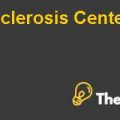
Youth Villages
Introduction
There are people in the world, who suffer from their own problems. Family culture is being destroyed. There was a time when only men were responsible to feed their families and it was mother’s responsibility to take care of their children. Hence, children were given full attention by their mothers.
Time has changed after the evolution of industrialization. Economic conditions got worst after the Second World War. Inflation rate was increasing and it became impossible for a man to take care of his family. Thus, it was necessary for both men and women to earn in order to feed their families.
It raised a new problem for both families and children. Children are not getting full attention of their parents; therefore, they are getting irritated. Fight rate between children and parents has increased. Some children decide to leave their home; hence, families suffer emotionally and their behaviors have changed too.
Problem Statement
Youth Villages decided to expand its operation into different states of America. Youth Villages faced many problems in few states. Question was raised that had Youth Villages analyzed all the factors before going into the expansion? Did Youth Villages have all the tools to overcome all barriers?
Problem Details
Youth Villages had its operation in Tennessee and decided to expand its operation in different states. This expansion had positive as well as negative results. There were many obstacles like inflow of cash in terms of fund, lack in decision making and in examining of different systems, structure and actors. It was projected that Youth Villages would earn between $120 million–$130 million. To finance its expansion, Youth Villages was able to raise $40 million fund. In the end, Youth Villages had enough finance to support its expansion.
About Youth Villages
Youth Villages was founded in 1986 with the merger of two residential campuses. Youth Villages had a budget of $150,000 when it was formed and it served 80 youth per years in its early days. Youth Villages was an organization that was focused to fortify families and it was dedicated to motivate parents to take care of their children. Youth Villages’ goal was to enhance the security level as well as the safety level of families and children; along with this it was positioned as a politically neutral organization.
80% of Youth Villages’ revenue came from government sources by 2007. Youth Villages was working with 5600 children and families through residential and in-home services in 2007. Total 11,000 children were being served in 2007. Youth Villages had complete facilities to serve those children who left their homes. Children were given emotional as well as behavioral support for their nourishment. The CEO of Youth Villages, Lawler once said it was their business to raise other’s children. It was found by Youth Villages that most of the people who left the Youth Villages were found in state custody.
It had become very important for Youth Villages to train and educate those children and families. It was decided by Lawler to use a “Re-education of youth with Emotional Disturbance” or “Re-ED” approach. According to that approach, children were considered as part of an ecosystem. Children were influenced by others and others had their influence over children. With the help of this approach, it was supposed to improve the health and competencies of children. In Re-ED community, it was a practice to punish those who have bad behaviors rather reinforce their behaviors in a fun environment.
In 1992, Lee Rone was hired as an internee. Later, he joined Youth Villages as a full time employee. He was supposed to make a business plan of Youth Villages. He identified that current method of research was very poor as results were not useful. He came up with new model that was Multi Systemic Therapy (MST). This model was not widely accepted by behavioral health service providers. According to this model, a service provider was supposed to work with children and their families as well as provide in-home counselors services whenever it was required rather putting children in residential centers.
Youth Villages was the pioneer in in-home services. MST model was adopted but on a very small scale. Counselors were supposed to meet children and their families as well as give them the direction to resolve issues. A counselor was supposed to look after four to six families.
In 2008, Youth Villages started to provide many services under the name of “continuum of care”. It was the largest in-home service program. In this program, Youth Villages decided to provide in-home and adoption service at the same time. The purpose of this program was to provide a service according to the need of each child.
Management Philosophy and Culture
Leader at Youth Villages had clear focus on continuous improvement and its results. Training was the top priority at Youth Villages. All functions were well-managed at Youth Villages.......................
This is just a sample partial case solution. Please place the order on the website to order your own originally done case solution.
Tennessee nonprofit youth village was impressive to serve the emotional and behavioral troubled youth and their families, with higher efficacy and lower costs than most child services. However, the extension to offer their services on a larger scale proved difficult. "Hide
by Allen Grossman, William Foster, Katharine Ross Source: Harvard Business School 25 pages. Publication Date: November 6, 2008. Prod. #: 309007-PDF-ENG













